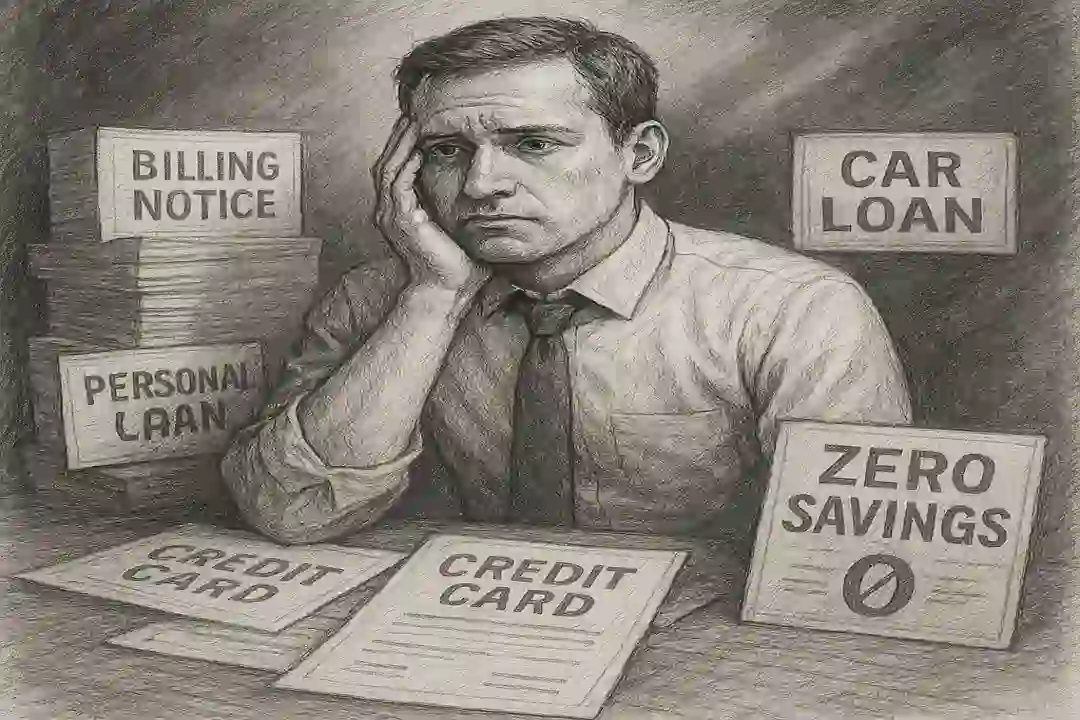How to Live Debt Free? Lets Start the Freedom Journey
- Lokesh Tiwari
- April 14, 2025

Becoming Debt-Free Is Not the Goal—Wealth Creation Is Many people set out on their financial journey with a single goal in mind: to become debt-free. While this is important, it’s not the ultimate destination. Becoming debt-free is just a milestone—the real goal is wealth creation.
In our experience mentoring over 700+ students across a 3-month program, we discovered a key pattern:
“Those who only focus on getting out of debt often stay in a loop. But those who aim for wealth creation become debt-free faster”
Why do people fall into the debt trap and only dream of becoming debt free?
We analyzed real data (from Aug 2021 to Apr 2025) from individuals with an average monthly salary of ₹68,000. Here are the top 3 reasons people fall into debt:
Behavioral Issues (Financial Mismanagement) – 61%
Health/Medical Emergencies in Family– 21%
Low Income (Genuine Expenses) – 18%
Let’s dig deeper into the behavioral issues, which are often the root cause. These include:
Financial illiteracy is the biggest reason
Emotional burden / Wrong philosophy of the money
Influence of social media & peer pressure
The PSI Framework: Problem – Solution – Implementation
Before jumping to solutions, we must identify the core problem. Without clarity, no solution will stick.
Step 1: Accounting – Identify the Problem
Start by creating a Personal Profit & Loss Statement.
In today’s world, data is everything. Companies like Google and Apple track every bit of data. But when it comes to our personal finances, we often ignore it.
You’ve seen your employer track every small reimbursement. Why? Because data helps drive decisions.
So, do the same for yourself:
1. List Your Fixed Expenses:
These are non-negotiable, recurring costs like:
-
Rent or home loan EMI
-
Personal loan EMI
-
School fees
-
Electricity bills
Tip: Convert yearly expenses (like insurance premiums or school fees) into monthly values for accurate budgeting.
2. List Your Fixed Investments:
Monthly commitments such as:
-
LIC premiums
-
ULIPs or SIPs in Mutual Funds
3. List Your Variable Expenses:
This includes flexible spending like:
-
Groceries
-
Travel
-
Dining out

Step2: Now Analyze
If Fixed Expenses + Fixed Investments + Variable Expenses > Monthly Income, it’s a red flag.
Here’s where most people go wrong:
-
They continue low-return investments (5-7%) while paying high-interest loans (18–25%).
-
That’s a clear case of financial illiteracy.
Solution: What Should You Do?
-
Review every expense and investment.
-
Cut investments that don’t yield better returns than your debt interest.
-
Identify and fix emotional or impulsive spending patterns.
Step3: Implementation-Fix Financial Mismanagement
This might mean:
-
Saying no to lifestyle inflation
-
Reducing social-media-driven purchases
-
Prioritizing needs over wants
We’ve helped many students do this. For some, we helped them reduce spending. For others, we helped them improve financial literacy or overcome behavioral challenges.
Debt-Free Is Just a Stop, Not the Destination
Never forget: Debt-free is not the goal. Wealth creation is.
Be ready to:
-
Take tough decisions
-
Cut unnecessary expenses
-
Increase your income
Many of our students became debt-free simply by working on themselves—with proper mentorship and guidance.
Want a step-by-step guide to start your debt free journey?
Just type on WhatsApp “Freedom” at 9019514522

Lokesh Tiwari
Lokesh Tiwari is the Personal Finance Mentor.
We rescue people from financial mismanagement. Through our mentorship, people start their financial freedom journey by learning about investment and wealth creation.

